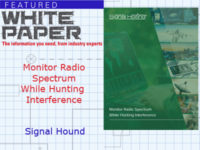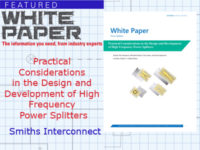Featured White Papers
RF Applications Guide: 9 Ways to Transform your Antenna Design with 3D-Printed Dielectrics
October 12, 2023
Optimizing RADAR Efficiency: An Examination of ERZIA’s GaN-Based Microwave Solid-State Power Amplifiers in X-Band
October 12, 2023
Current Status of UAVs (Drones) and Trends in Applied Wireless Communication Technologies
September 14, 2023
Standardizing Space Ovenized Crystal Oscillators for Lower Cost and Faster Delivery
September 14, 2023










